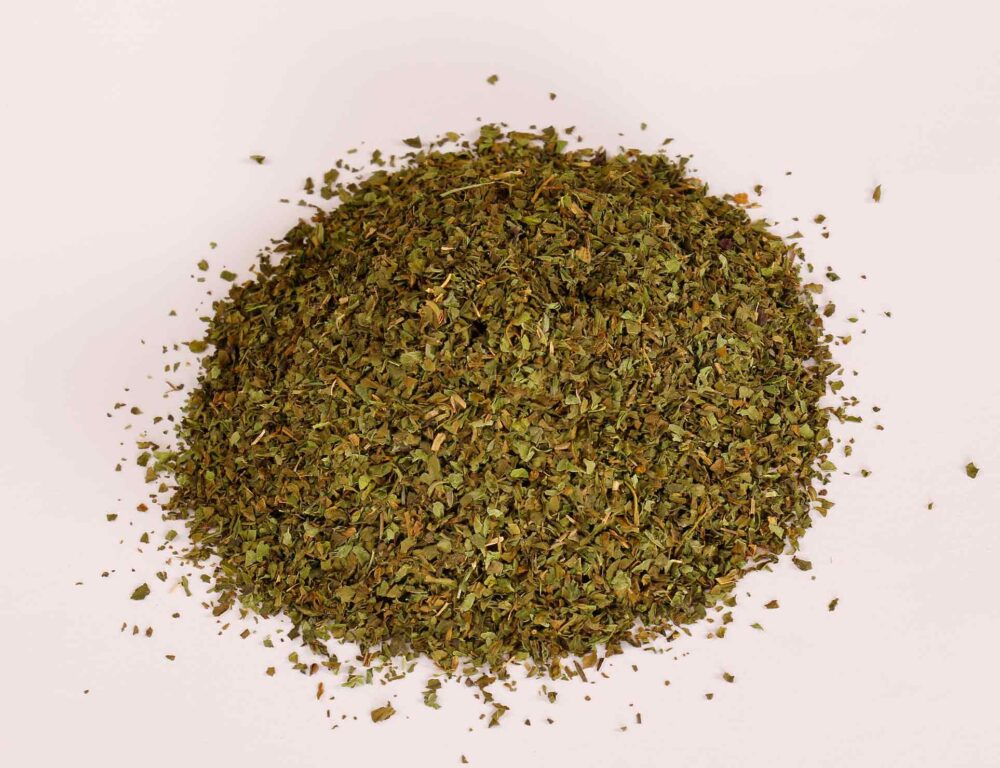At EIC for Export, we supply premium Bulk Egyptian Dried Peppermint, carefully harvested, additionally naturally dried to preserve its crisp aroma, vibrant green color, and high menthol content. Whether you need peppermint for tea, extract production, or food applications, we deliver consistent quality with full export documentation.
Why Choose Our Bulk Egyptian Dried Peppermint?
Here’s why our dried peppermint stands out in global markets, for example:
✨ Top Quality: Firstly, we provide dried Mentha piperita, rich in natural menthol and free from dust and foreign matter. Secondly, our peppermint is dried under controlled conditions.
As a result, you receive pure, export-grade dried peppermint suitable for herbal blends, tea bags, and essential oil extraction.
📦 Consistent Supply: In fact, we ensure a stable year-round supply of bulk peppermint. Whether you need a container load or regular monthly shipments, our production and drying capacity meet the needs of global buyers.
🚛 Custom Packaging: We offer packaging in 20:25kg PP bags or paper bags, or custom solutions based on buyer preference.
🌍 Global Reach: Moreover, our bulk Egyptian peppermint is trusted by tea companies, food processors, and essential oil producers across Europe, the Middle East, Asia, and North America. Additionally, we provide smooth logistics and handle all export documents.
Specifications for Bulk Egyptian Dried Peppermint
| Parameter | Specification |
| Product name | Dried Peppermint (Mentha piperita) |
| Botanical name | Mentha piperita (conventional) |
| Moisture | ≤12% |
| Form | crushed & powdered |
| Packaging | 20: 25 kg pp bags or paper bags |
| Shelf Life | Shelf Life 24 months (if stored in cool, dry conditions) |
| Certifications | FDA, ISO 22000, ISO 9001, MFDS Korea |
Main Applications of our Bulk Egyptian Dried Peppermint
Our dried peppermint serves a wide range of industries; for example:
- Culinary Applications: Used in herbal teas, mint blends, candies, and flavoring syrups. Popular in peppermint recipes, desserts, and culinary extracts. Also ideal for cooking peppermint into sauces and savory dishes.
- Health & Nutrition:
Rich in antioxidants and menthol, peppermint is used in natural remedies for digestion, headache relief, and cold symptoms. Additionally, common in peppermint supplements, peppermint weight loss aids, and peppermint extract capsules. - Industrial Use:
Processed into peppermint oil, mentha piperita extract, and used in cosmetics, toothpaste, and aromatherapy. Additionally, valued in the pharma and nutraceutical industries for its soothing and antimicrobial properties.
Shipping & Documentation for our Bulk Egyptian Dried Peppermint
In Addition, each shipment includes:
- Commercial Invoice
- Packing List
- Bill of Lading (B/L)
- Phytosanitary Certificate
- Certificate of Origin (COO)
- Fumigation Certificate
- Silica Gel Inclusion (for moisture protection)
- Full Insurance Policy
- Importer Security Filing (ISF file for USA)
Our Export Markets for our Egyptian Dried Peppermint
Honestly, our dried peppermint is exported worldwide, including the USA, Canada, Brazil, Peru, Turkey, China, Tunisia, Iraq, Lebanon, Taiwan, UAE. Trusted by tea brands, herbal medicine manufacturers, and bulk ingredient suppliers.
Product Highlights: Peppermint (Mentha piperita)
Moreover, our dried Peppermint is processed to meet global standards, for example:
* Dried Peppermint: Sun-dried and fragrant
* Crushed Peppermint: Ideal for tea blends
* Essential Oil Grade: Rich in menthol, clear aroma
* HS Code: 12119000
Why Work with EIC?
✅ Direct farm sourcing and cleaning facilities of Mentha piperita.
✅ Competitive bulk peppermint price.
✅ A lot of years of export expertise.
✅ Full documentation and flexible logistics.
Order Bulk Egyptian Dried Peppermint Today
📦 Minimum Order: 6 MT (flexible for regular buyers)
📅 Lead Time: 12–14 days after order confirmation
🎯 Special Offer: Order 40 MT+ and receive free fumigation. Moreover, insurance added value and peace of mind.
📧 Contact us for a custom quote: info@herbseic.com
🌐 www.herbseic.com
W: +20 (012-22814448)
📍 Based in Fayoum, Egypt.
👉 Fast response within 24 hours guaranteed.
🎥 Visit our YouTube Channel for behind-the-scenes footage of our peppermint farms processing.


Reviews
There are no reviews yet.